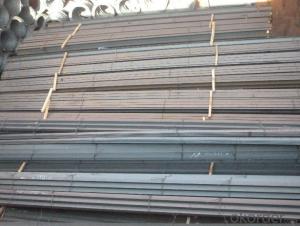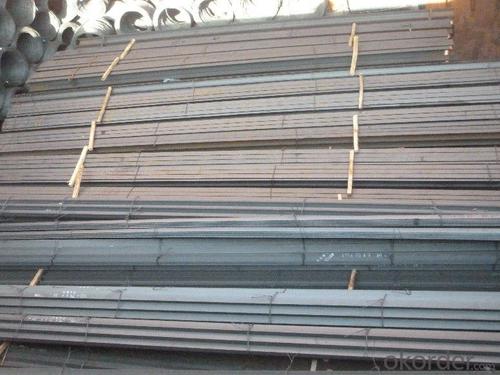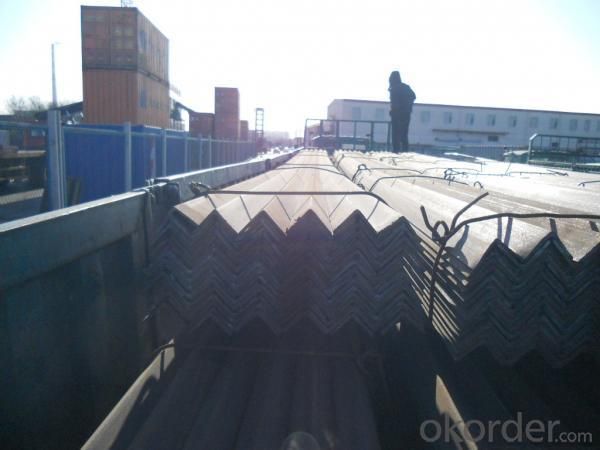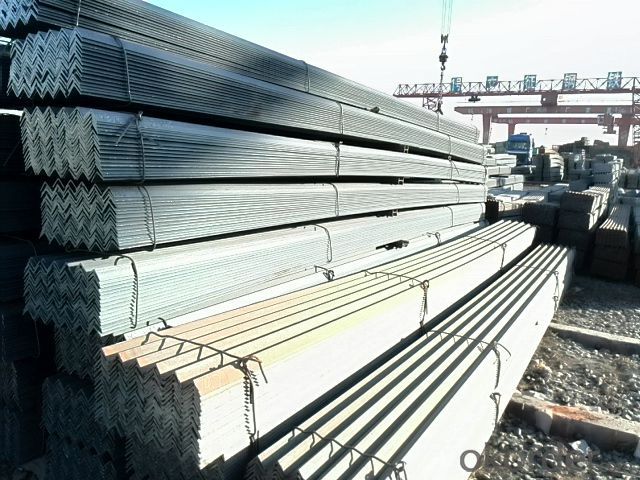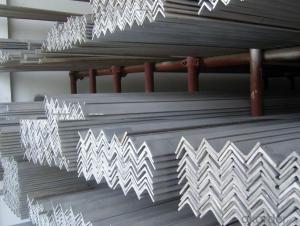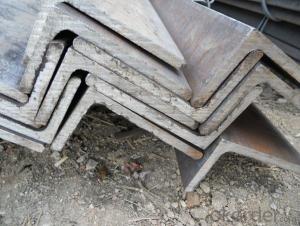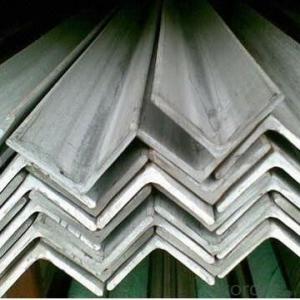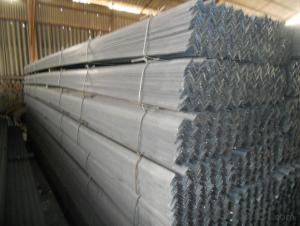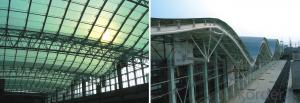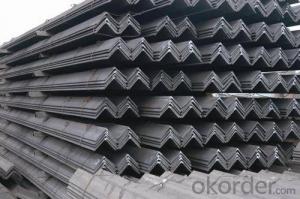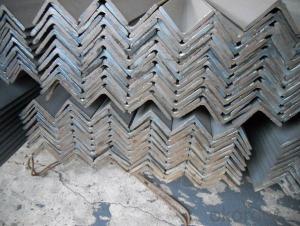Hot Rolled Prime Alloy Steel Angles Metal for Structures
- Loading Port:
- Tianjin
- Payment Terms:
- TT or LC
- Min Order Qty:
- 1000 m.t.
- Supply Capability:
- 3500 m.t./month
OKorder Service Pledge
OKorder Financial Service
You Might Also Like
OKorder is offering Hot Rolled Prime Alloy Steel Angles Metal for Structures at great prices with worldwide shipping. Our supplier is a world-class manufacturer of steel, with our products utilized the world over. OKorder annually supplies products to African, South American and Asian markets. We provide quotations within 24 hours of receiving an inquiry and guarantee competitive prices.
Product Applications:
Hot Rolled Prime Alloy Steel Angles Metal for Structures are ideal for structural applications and are widely used in the construction of buildings and bridges, and the manufacturing, petrochemical, and transportation industries.
Product Advantages:
OKorder's Hot Rolled Prime Alloy Steel Angles Metal for Structures are durable, strong, and wide variety of sizes.
Main Product Features:
· Premium quality
· Prompt delivery & seaworthy packing (30 days after receiving deposit)
· Can be recycled and reused
· Mill test certification
· Professional Service
· Competitive pricing
Product Specifications:
Manufacture: Hot rolled
Grade: Q195 – 235
Certificates: ISO, SGS, BV, CIQ
Length: 6m – 12m, as per customer request
Packaging: Export packing, nude packing, bundled
EQUAL ANGLES SIZES |
| ||
a(mm) | a1(mm) | thickness(mm) | length |
25 | 25 | 2.5---3.0 | 6M/12M |
30 | 30 | 2.5---4.0 | 6M/12M |
38 | 38 | 2.5 | 6M/12M |
38 | 38 | 3.0---5.0 | 6M/12M |
40 | 40 | 3.0---6.0 | 6M/12M |
50 | 50 | 3 | 6M/12M |
50 | 50 | 3.7---6.0 | 6M/9M/12M |
60 | 60 | 5.0---6.0 | 6M/9M/12M |
63 | 63 | 6.0---8.0 | 6M/9M/12M |
65 | 65 | 5.0---8.0 | 6M/9M/12M |
70 | 70 | 6.0---7.0 | 6M/9M/12M |
75 | 75 | 5.0---10.0 | 6M/9M/12M |
80 | 80 | 6.0---10.0 | 6M/9M/12M |
90 | 90 | 6.0---10.0 | 6M/9M/12M |
100 | 100 | 6.0---12.0 | 6M/9M/12M |
120 | 120 | 8.0-12.0 | 6M/9M/12M |
125 | 125 | 8.0---12.0 | 6M/9M/12M |
130 | 130 | 9.0-12.0 | 6M/9M/12M |
140 | 140 | 10.0-16.0 | 6M/9M/12M |
150 | 150 | 10---15 | 6M/9M/12M |
160 | 160 | 10---16 | 6M/9M/12M |
180 | 180 | 12---18 | 6M/9M/12M |
200 | 200 | 14---20 | 6M/9M/12M |
FAQ:
Q1: Why buy Materials & Equipment from OKorder.com?
A1: All products offered byOKorder.com are carefully selected from China's most reliable manufacturing enterprises. Through its ISO certifications, OKorder.com adheres to the highest standards and a commitment to supply chain safety and customer satisfaction.
Q2: How do we guarantee the quality of our products?
A2: We have established an advanced quality management system which conducts strict quality tests at every step, from raw materials to the final product. At the same time, we provide extensive follow-up service assurances as required.
Q3: How soon can we receive the product after purchase?
A3: Within three days of placing an order, we will arrange production. The normal sizes with the normal grade can be produced within one month. The specific shipping date is dependent upon international and government factors, the delivery to international main port about 45-60days.
Images:
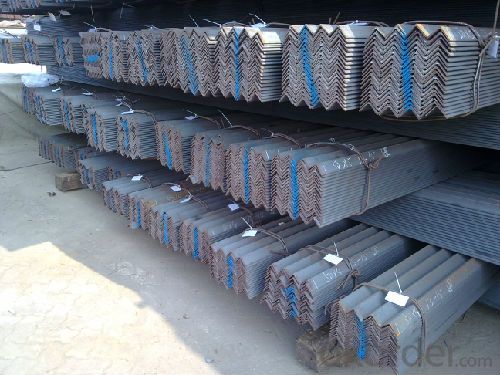
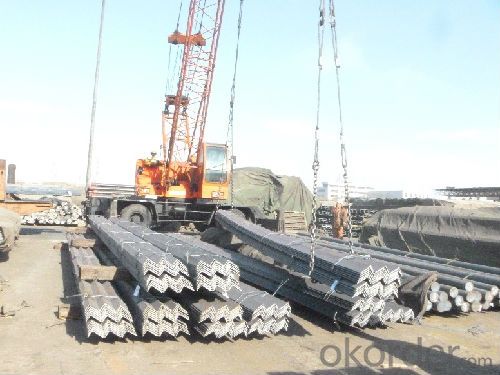
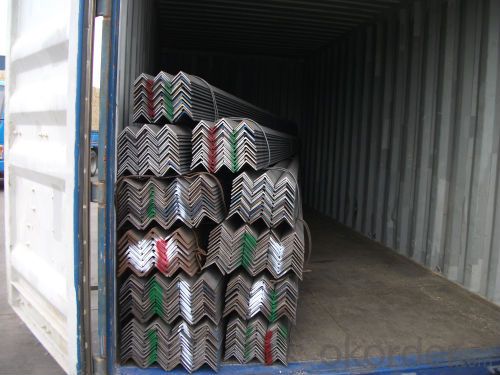
- Q: What are the typical lengths of steel angles available in the market?
- The typical lengths of steel angles available in the market range from 20 feet to 40 feet.
- Q: Can steel angles be painted or finished for decorative purposes?
- Indeed, steel angles have the potential to be painted or finished in order to achieve decorative purposes. These steel angles, commonly utilized in construction and industrial settings, can undergo painting or finishing procedures to enhance their visual appeal and contribute a decorative element. The act of painting steel angles serves the dual purpose of safeguarding them against corrosion and rust, while also allowing for customization to align with the aesthetic requirements of the particular project. Furthermore, alternative finishes such as powder coating, electroplating, or galvanizing can be employed to augment both the appearance and durability of these steel angles. Through the application of paint or finishing techniques, steel angles can be seamlessly integrated into a variety of architectural and design ventures, thereby serving both functional and visually enticing purposes.
- Q: Can steel angles be used for storage racks?
- Certainly, storage racks can indeed be constructed using steel angles. Due to their exceptional strength and durability, steel angles find frequent usage within the construction industry. They possess the versatility to be effortlessly molded into numerous configurations, including those required for designing storage racks. These angles offer structural reinforcement and stability, rendering them an optimal choice for accommodating heavy items. Moreover, their resistance to corrosion becomes paramount in upholding the long-term robustness of the storage racks. All in all, steel angles serve as a dependable and widely employed material for fabricating storage racks.
- Q: What is the fire resistance rating of steel angles?
- The fire resistance of steel angles relies on several factors, including the angle's size and thickness, the type of steel employed, and the specific fire protection measures implemented. Steel possesses inherent fire resistance due to its high melting point and low thermal conductivity. Nevertheless, the fire resistance can be improved by applying fireproofing materials, such as intumescent coatings or fire-resistant boards, to the steel angles. By providing insulation and slowing down heat transfer to the steel, these fire protection measures can significantly augment the fire resistance of steel angles. The specific fire resistance rating may differ depending on the thickness and type of fireproofing materials employed. For instance, a steel angle coated with a particular fireproofing substance may have a fire resistance rating of 60 minutes, signifying its ability to withstand fire exposure for up to 60 minutes without compromising its structural integrity. To determine the specific fire resistance requirements for steel angles in a specific application, it is crucial to refer to local building codes, regulations, and fire safety standards. These standards can offer guidance on the necessary fire protection measures and the minimum fire resistance ratings that must be met in different construction scenarios.
- Q: What are the different types of steel angles used in bridge construction?
- Bridge construction commonly utilizes various types of steel angles that serve vital roles in providing structural support and stability to the bridge. 1. Equal Leg Angles, also referred to as L-shaped angles, possess two legs of equal length forming a 90-degree angle. These angles support and reinforce the bridge components during construction. 2. Unequal Leg Angles, as implied, have two legs of different lengths forming a 90-degree angle. These angles are frequently employed in bridge construction to accommodate specific design requirements and support varying loads. 3. Bulb Angles are unique angles characterized by a bulb-shaped leg. They enhance the strength and rigidity of the bridge structure, particularly in areas expected to experience high stress or heavy loads. 4. Inverted Angles are similar to equal leg angles, but their orientation is inverted, with the longer leg positioned at the bottom. These angles provide additional support and stability, especially when the bridge must withstand lateral forces. 5. Fillet Welded Angles are angles joined together using fillet welds. Their purpose in bridge construction is to establish robust and durable connections between different bridge components, ensuring structural integrity and stability. Each steel angle type possesses distinct properties and advantages, rendering them suitable for specific applications in bridge construction. The selection of the appropriate angle type depends on factors such as load requirements, span length, design specifications, and structural considerations. Professional engineers and designers diligently evaluate these factors to determine the most suitable steel angle for a given bridge construction project.
- Q: What are the different types of connections used for steel angles in architectural applications?
- There are several types of connections used for steel angles in architectural applications. Some common types include bolted connections, welded connections, and riveted connections. Bolted connections involve using bolts to secure the steel angles together, while welded connections involve fusing the steel angles using heat. Riveted connections, on the other hand, involve using rivets to connect the steel angles together. Each type of connection has its own advantages and disadvantages, and the choice depends on factors such as the load requirements, aesthetics, and ease of construction.
- Q: What is a steel angle?
- A steel angle is a type of structural steel shape that has two legs of equal length, forming a 90-degree angle. It is commonly used in construction and various industries for providing structural support and reinforcement.
- Q: Can steel angles be used in conveyor belt supports?
- Yes, steel angles can be used in conveyor belt supports. Steel angles are commonly used as structural supports in various applications due to their strength and durability. They provide excellent load-bearing capacity and can withstand heavy weights, making them suitable for supporting conveyor belts. The angles can be used to create a sturdy framework or structure that holds the conveyor belt in place and allows it to move smoothly. Additionally, steel angles can be easily fastened or welded together, providing a secure and stable support system for conveyor belts.
- Q: What is the minimum length of a steel angle?
- The minimum length of a steel angle can vary depending on the specific requirements and applications. However, in general, the minimum length is typically around 6 inches or 150 mm.
- Q: How do you determine the required angle length for a specific application?
- There are several factors that need to be taken into account when determining the necessary length of an angle for a specific application. Firstly, it is important to identify the purpose of the angle in the application. Will it be used for structural support, bracing, or as a decorative element? This will help determine the level of strength and stability required, which will then influence the length of the angle. Next, it is necessary to assess the load or weight that the angle will need to bear. Understanding the amount of force or pressure that will be applied to the angle will assist in determining the appropriate length. A heavier load may require a longer angle to effectively distribute the weight and prevent bending or failure. The material of the angle is another crucial consideration. Different materials have varying levels of strength and durability. For instance, steel angles are stronger than aluminum angles. The properties of the material, such as tensile strength and resistance to corrosion, will impact the required length for the specific application. Furthermore, the specific geometry and configuration of the application should be taken into account. Factors like the overall dimensions, desired angle of inclination, and any additional supports or attachments must be considered. These factors may affect the length needed to ensure proper fit, function, and stability. Lastly, it is important to consult industry standards and regulations to guarantee compliance and safety. Certain applications may have specific guidelines for the length of angles to be used, particularly in fields like construction or engineering. In conclusion, determining the necessary length of an angle for a specific application requires a comprehensive analysis of the purpose, load, material, geometry, and relevant standards. Seeking advice from experts or engineers in the field can also provide valuable insights and guidance.
Send your message to us
Hot Rolled Prime Alloy Steel Angles Metal for Structures
- Loading Port:
- Tianjin
- Payment Terms:
- TT or LC
- Min Order Qty:
- 1000 m.t.
- Supply Capability:
- 3500 m.t./month
OKorder Service Pledge
OKorder Financial Service
Similar products
Hot products
Hot Searches
Related keywords
